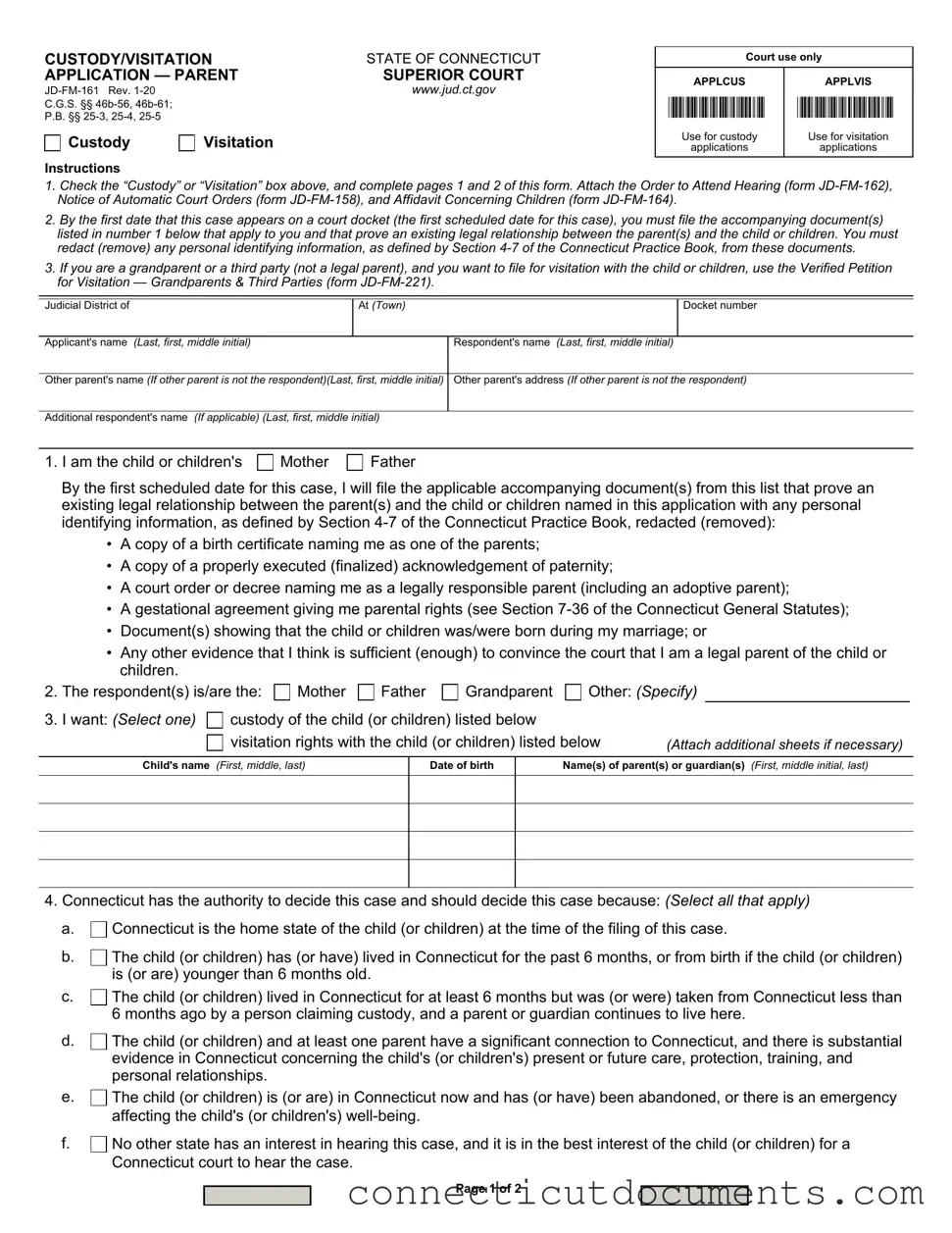What is the Connecticut Custody Application form?
The Connecticut Custody Application form is a legal document used to request custody or visitation rights for a child. It is filed in the Superior Court and helps establish the legal relationship between parents and their children. The form must be completed accurately and submitted along with supporting documents to the court.
Who can use this form?
Parents seeking custody or visitation rights should use this form. If you are a grandparent or a third party, you will need to use a different form called the Verified Petition for Visitation — Grandparents & Third Parties (form JD-FM-221).
What documents do I need to attach when filing this form?
You need to attach several documents, including the Order to Attend Hearing (form JD-FM-162), Notice of Automatic Court Orders (form JD-FM-158), and Affidavit Concerning Children (form JD-FM-164). Additionally, provide proof of your legal relationship with the child, such as a birth certificate or court order.
How do I prove my legal relationship to the child?
To prove your legal relationship, you can submit a copy of the child's birth certificate, a finalized acknowledgment of paternity, or any court order that names you as a legal parent. Ensure that any personal identifying information is redacted from these documents.
What should I do if I want to request visitation rights?
If you are seeking visitation rights, you must check the "Visitation" box on the form and complete the necessary sections. Be clear about the visitation schedule you are requesting and provide the names and birth dates of the children involved.
How does the court decide jurisdiction for custody cases?
The court has jurisdiction if Connecticut is the home state of the child, if the child has lived in Connecticut for the last six months, or if there are significant connections to Connecticut. The court will consider where the child has lived and the relationships involved.
What if I have received financial support from the state?
If you or the child has received financial support or HUSKY health insurance from the State of Connecticut, you must indicate this on the form. You will also need to send a copy of your application and other documents to the Office of the Attorney General and file a Certification of Notice with the court clerk.
What if I need accommodations due to a disability?
If you require accommodations under the Americans with Disabilities Act (ADA), you should contact a court clerk or an ADA contact person listed on the Connecticut Judicial Branch website. They can help ensure you receive the support you need during the process.
How do I submit the Connecticut Custody Application form?
You can submit the form in person at the appropriate Superior Court or, in some cases, electronically. Make sure to file all necessary documents and keep copies for your records. Pay attention to any deadlines to ensure your application is processed in a timely manner.
